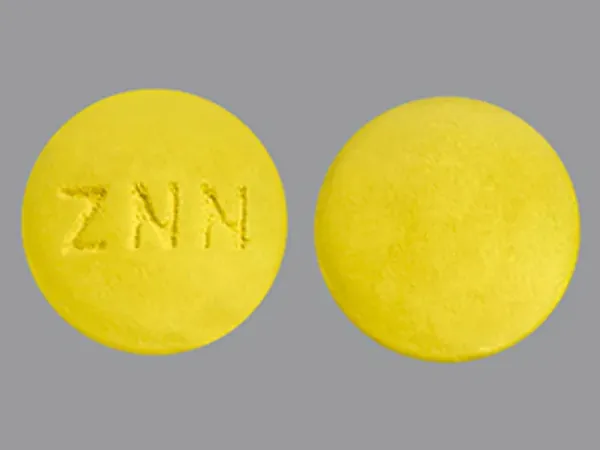Nitazoxanide Side Effects
Medically reviewed by Drugs.com. Last updated on Dec 10, 2024.
Applies to nitazoxanide: oral powder for suspension, oral tablet.
Precautions
It is very important that your doctor check your progress at regular visits and to check for unwanted effects.
If your symptoms do not improve within a few days or if they become worse, check with your doctor.
Do not take other medicines unless they have been discussed with your doctor. This includes prescription or nonprescription (over-the-counter [OTC]) medicines and herbal or vitamin supplements.
Common side effects of nitazoxanide
Some side effects of nitazoxanide may occur that usually do not need medical attention. These side effects may go away during treatment as your body adjusts to the medicine. Also, your health care professional may be able to tell you about ways to prevent or reduce some of these side effects.
Check with your health care professional if any of the following side effects continue or are bothersome or if you have any questions about them:
Less common side effects
- abdominal or stomach pain
- headache
- nausea
- urine changes
Incidence not known
- dizziness
- heartburn
- hives or welts, itching, or skin rash
- redness of the skin
- trouble breathing
- vomiting
Serious side effects of nitazoxanide
Along with its needed effects, nitazoxanide may cause some unwanted effects. Although not all of these side effects may occur, if they do occur they may need medical attention.
Check with your doctor immediately if any of the following side effects occur while taking nitazoxanide:
Incidence not known
See also:
For healthcare professionals
Applies to nitazoxanide: oral powder for reconstitution, oral tablet.
General adverse events
Side effects were generally mild. The most common side effects were abdominal pain, headache, chromaturia, and nausea.[Ref]
Gastrointestinal
- Common (1% to 10%): Abdominal pain, nausea
- Frequency not reported: Vomiting, flatulence, dyspepsia, constipation, dry mouth, enlarged salivary glands
- Postmarketing reports: Diarrhea, gastroesophageal reflux disease[Ref]
Nervous system
- Common (1% to 10%): Headache
- Frequency not reported: Somnolence, tremor, hypesthesia, syncope
- Postmarketing reports: Dizziness[Ref]
Genitourinary
- Common (1% to 10%): Chromaturia
- Frequency not reported: Discolored urine, dysuria, amenorrhea, metrorrhagia, edema labia[Ref]
Dermatologic
Respiratory
- Frequency not reported: Epistaxis, rhinitis, lung disease, pharyngitis
- Postmarketing reports: Dyspnea[Ref]
Other
- Frequency not reported: Asthenia, fever, pain, pelvic pain, back pain, influenza syndrome, earache, chills, thirst, infection[Ref]
Metabolic
Musculoskeletal
- Frequency not reported: Myalgia, leg cramps, spontaneous bone fracture[Ref]
Cardiovascular
- Frequency not reported: Tachycardia, hypertension[Ref]
Hematologic
- Frequency not reported: Anemia, leukocytosis[Ref]
Renal
- Frequency not reported: Kidney pain, increased creatinine[Ref]
Psychiatric
Hepatic
- Frequency not reported: Increased ALT[Ref]
Hypersensitivity
- Frequency not reported: Allergic reaction[Ref]
Ocular
- Frequency not reported: Eye discoloration (including pale yellow eye discoloration)[Ref]
References
1. (2002) "Product Information. Alinia (nitazoxanide)." Romark Laboratories L.C.
2. Melbourne: Therapeutic Guidelines Limited (2015) eTG complete [Online] http://online.tg.org.au/complete/desktop/tgc.htm
3. Stockis A, De Bruyn S, Gengler C, Rosillon D (2002) "Nitazoxanide pharmacokinetics and tolerability in man during 7 days dosing with 0.5 g and 1 g b.i.d." Int J Clin Pharmacol Ther, 40, p. 221-7
4. Fox LM, Saravolatz LD (2005) "Nitazoxanide: a new thiazolide antiparasitic agent." Clin Infect Dis, 40, p. 1173-80
More about nitazoxanide
- Check interactions
- Compare alternatives
- Reviews (2)
- Drug images
- Dosage information
- During pregnancy
- Drug class: amebicides
- Breastfeeding
- En español
Patient resources
- Nitazoxanide drug information
- Nitazoxanide (Advanced Reading)
- Nitazoxanide Tablets
- Nitazoxanide Suspension
Other brands
Professional resources
Other brands
Related treatment guides
Further information
Nitazoxanide side effects can vary depending on the individual. Always consult your healthcare provider to ensure the information displayed on this page applies to your personal circumstances.
Note: Medication side effects may be underreported. If you are experiencing side effects that are not listed, submit a report to the FDA by following this guide.

